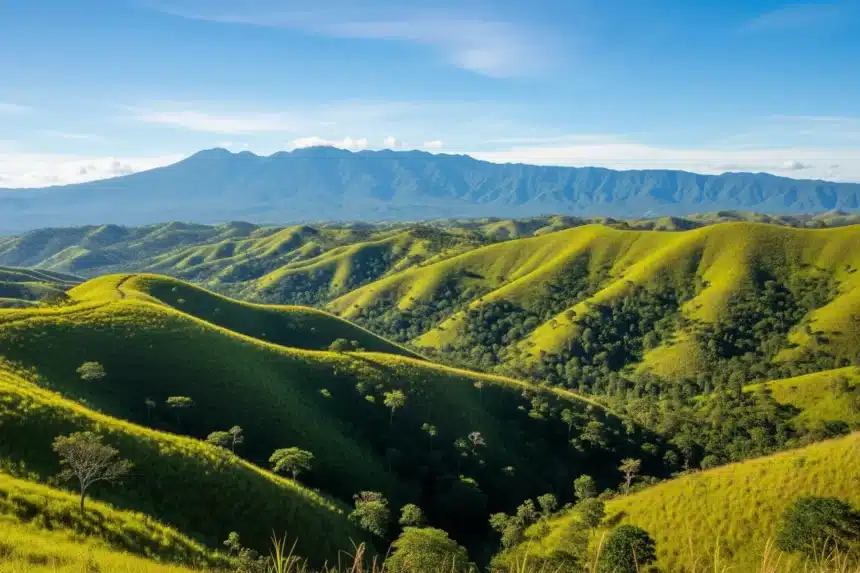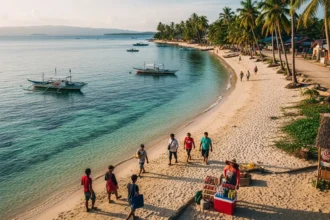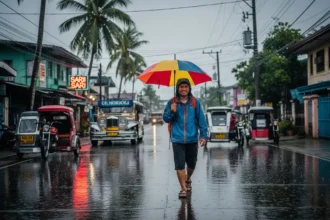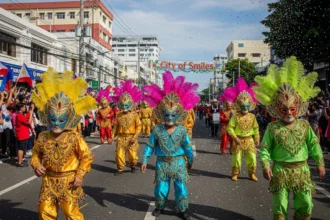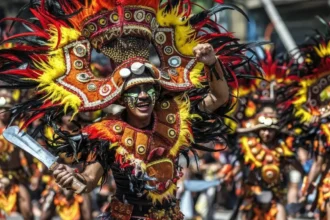When you think of the Philippines, the first images that often come to mind are of sun-drenched beaches and swaying palm trees. But there’s another side to our tropical archipelago, a world of cool mountain air, the scent of pine, and a culture that runs as deep as the valleys. This is the world you’ll discover in Malaybalay City, the capital of Bukidnon. Known as the “South-Central Mindanao-Northern Mindanao Growth Corridor” and often called the “City in the Forest,” Malaybalay offers a refreshing escape, both literally and figuratively.
- 📜 A Glimpse into Malaybalay’s Past
- ✈️ Planning Your Highland Adventure
- 🗺️ Things to Do in Malaybalay: A City of Forests and Faith
- 🗓️ A Suggested 3-Day Malaybalay Itinerary
- 🍍 A Taste of the Highlands: What to Eat in Malaybalay
- 🎉 The Soul of Bukidnon: Kaamulan Festival
- 📌 Frequently Asked Questions
- ❤️ A Final Word from the Road
This is not a city of hurried tours and crowded attractions. It’s a place that invites you to slow down, to breathe in the crisp highland air, and to connect with a culture that is profoundly authentic and beautifully preserved. Home to the celebrated Kaamulan Festival, Malaybalay is the cultural heartland of the seven indigenous tribes of Bukidnon. For any traveler seeking to understand the soul of Mindanao beyond the coastlines, this Malaybalay travel guide is your starting point for an unforgettable journey into the cool, green highlands.
📜 A Glimpse into Malaybalay’s Past
Malaybalay has long been the political and cultural center of Bukidnon. Formally established as a municipality in 1907, it has served as the provincial capital since Bukidnon became an independent province in 1917. Its history is deeply connected to the indigenous communities who have inhabited these highlands for centuries, and this heritage remains a vibrant, living part of the city’s identity today.
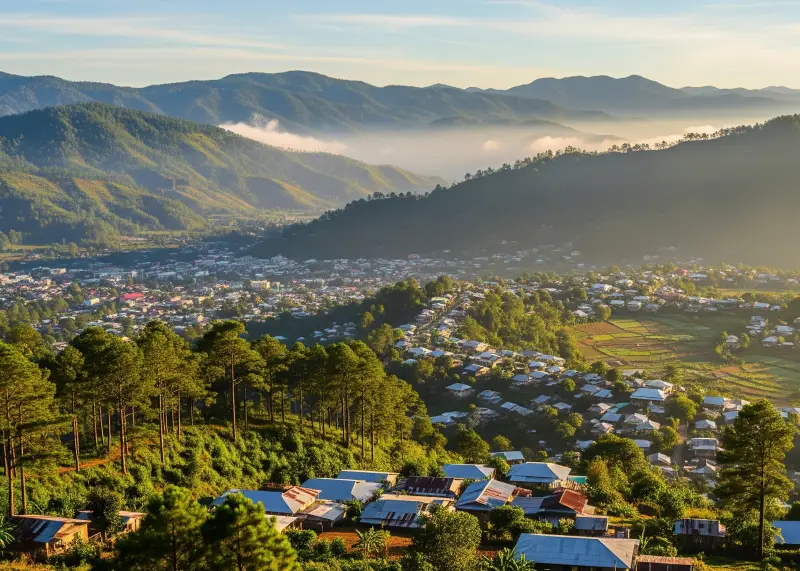
✈️ Planning Your Highland Adventure
Getting to Malaybalay is a scenic journey that takes you from the coast up into the heart of Mindanao’s mountain region.
How to Get to Malaybalay
The main access point to Bukidnon is through Cagayan de Oro City.
- Fly to Cagayan de Oro (CGY): Laguindingan Airport serves the Cagayan de Oro area and receives daily flights from Manila, Cebu, and other major hubs.
- Travel by Bus or Van: From the airport, make your way to the Agora Bus Terminal in Cagayan de Oro. From there, modern air-conditioned buses (like Rural Transit) and vans make the trip to Malaybalay frequently. The journey takes approximately 1.5 to 2.5 hours and offers stunning views of the Bukidnon landscape.
Where to Stay
Malaybalay offers a variety of comfortable and budget-friendly accommodations.
- Inns and Apartelles: Places like Green Ridge Apartelle and JB Apartelle offer clean, no-frills rooms that are perfect for travelers.
- Unique Stays: For a more memorable experience, consider Eiffel Kubo, a charming hotel with a unique French-Filipino architectural theme.
- Booking Tip: If you plan to visit during the Kaamulan Festival (February-March), it is absolutely essential to book your accommodation months in advance as the city fills up completely.
🗺️ Things to Do in Malaybalay: A City of Forests and Faith
Malaybalay’s attractions are a beautiful blend of spiritual sanctuaries, natural wonders, and cultural hubs. Here are the best places to visit and things to do in the city.
Cultural & Spiritual Sites
- Monastery of the Transfiguration: This is the city’s most iconic landmark. Designed by National Artist for Architecture Leandro Locsin, the stunning pyramid-shaped church is a place of profound peace and prayer. Attend a Sunday mass to hear the Benedictine monks’ Gregorian chants, and don’t leave without visiting the gift shop for their famous Monk’s Blend coffee.
- Kaamulan Park: This sprawling park is the cultural heart of the city and the main venue for the Kaamulan Festival. With its towering pine trees and replicas of traditional houses of the seven indigenous tribes, it’s a perfect place for a leisurely walk, a picnic, or simply enjoying the cool mountain air.
- Roxas Monument: A historical park dedicated to Manuel Roxas, the first president of the independent Republic of the Philippines. It’s a quiet spot to learn a bit about the city’s history.
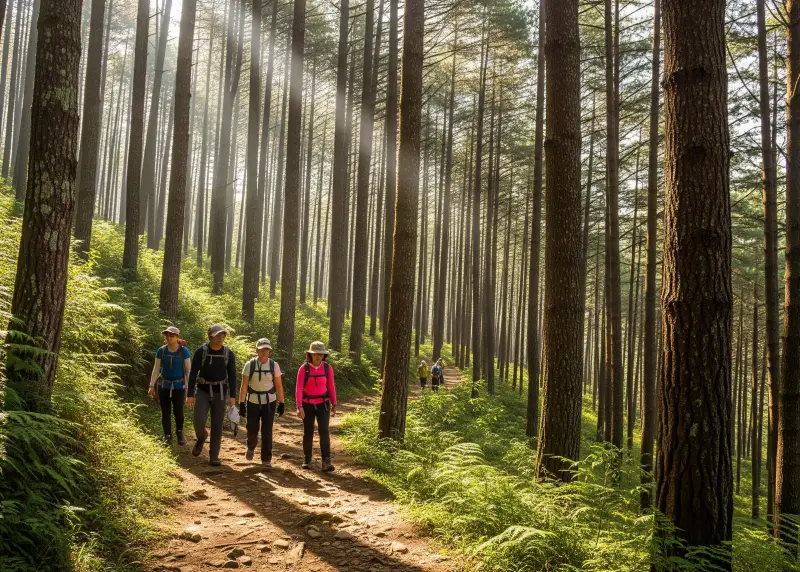
Nature & Adventure
- Two Trees Mountain: A popular spot for locals and visitors alike, this hill offers a relatively easy trek that leads to a breathtaking panoramic view of Malaybalay City and the surrounding Kitanglad and Kalatungan mountain ranges. It’s best to go in the early morning to catch the sunrise.
- Nasuli Spring: Located in the nearby Barangay Bangcud, this cold spring is a refreshing oasis. Its clear, turquoise waters are perfect for a cool dip, especially on a warm day. The area is surrounded by lush greenery, making it a favorite local picnic spot.
- Mount Capistrano: For more serious hikers, Mount Capistrano offers a more challenging day climb. Known for its distinct rocky peaks and sheer cliffs, the summit provides a rewarding 360-degree view of the Bukidnon landscape.
🗓️ A Suggested 3-Day Malaybalay Itinerary
This itinerary provides a balanced experience of Malaybalay’s spiritual sites, cultural hubs, and natural beauty.
Day 1: Spiritual Serenity and City Sights
- Morning: After arriving and settling in, take a multicab or tricycle to the Monastery of the Transfiguration. Spend the morning in quiet reflection, admire the unique pyramid architecture, and visit the gift shop.
- Afternoon: Head back to the city proper and explore Kaamulan Park. Walk under the towering pine trees and see the replicas of indigenous tribal houses.
- Evening: Have dinner at a local restaurant. Try some Bukidnon-raised beef at a steakhouse or enjoy classic Filipino dishes.
Day 2: Mountain Views and Cool Springs
- Morning: Start your day with an early morning hike up Two Trees Mountain to catch the sunrise.
- Afternoon: Cool off with a trip to Nasuli Spring. Take a refreshing dip in its clear, ice-cold waters.
- Evening: Explore the area around the Provincial Capitol building and enjoy the laid-back evening atmosphere of the city.
Day 3: Local Life and Pasalubong
- Morning: Visit the Malaybalay City Public Market to experience local life and see the region’s fresh produce.
- Afternoon: Do your pasalubong shopping. Head back to the Monastery’s gift shop for coffee and peanut brittle, or visit local stores for Bukidnon’s famous pineapple products.
- Evening: Enjoy a final dinner before preparing for your departure the next day.
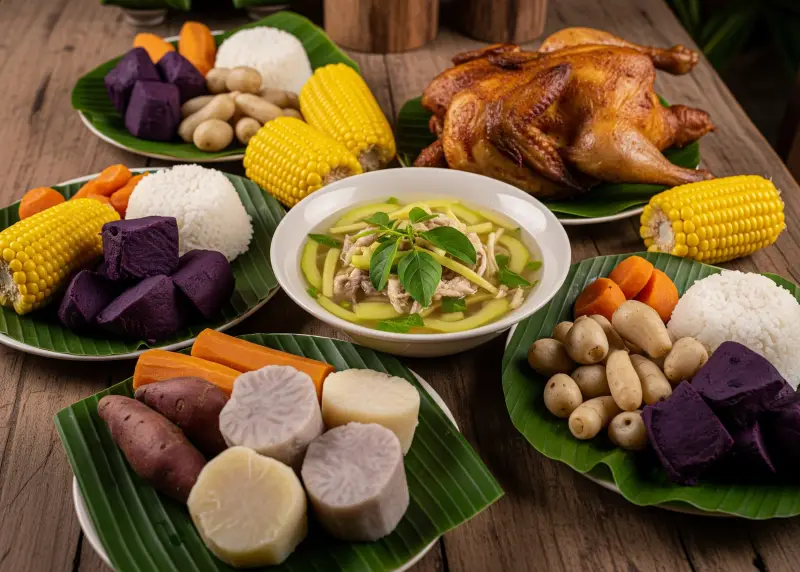
🍍 A Taste of the Highlands: What to Eat in Malaybalay
Bukidnon is the food basket of Mindanao, and Malaybalay offers a taste of this bounty. The food here is fresh, hearty, and comforting.
| Must-Try Item | Description |
|---|---|
| Monk’s Blend Coffee | A rich, aromatic coffee grown and roasted by the Benedictine monks. It’s the city’s most famous pasalubong. |
| Bukidnon Steak | The province is known for its cattle ranches, and you can find surprisingly good and affordable steaks in many local restaurants. |
| Fresh Fruits & Vegetables | Enjoy sweet pineapples, passion fruit, and fresh, crisp vegetables sourced directly from the surrounding farms. |
| Monastery’s Peanut Brittle | Another famous product from the Monastery of the Transfiguration, this sweet and crunchy treat is a local favorite. |
🎉 The Soul of Bukidnon: Kaamulan Festival
If there is one reason to plan your trip to Malaybalay, it is for the Kaamulan Festival. Held annually from mid-February to March 10 (the province’s foundation day), this is arguably the most authentic indigenous festival in the Philippines. “Kaamulan” comes from the Binukid word “amul,” meaning “to gather,” and it is a gathering of the seven hill tribes of Bukidnon: the Bukidnon, Higaonon, Talaandig, Manobo, Matigsalug, Tigwahanon, and Umayamnon.
Unlike many other festivals, Kaamulan is not a reenactment. It is a genuine showcase of living traditions, with authentic rituals, chants, and dances. The highlight is the street dancing competition, where each municipality presents a vibrant and deeply meaningful performance depicting their tribe’s stories and traditions.
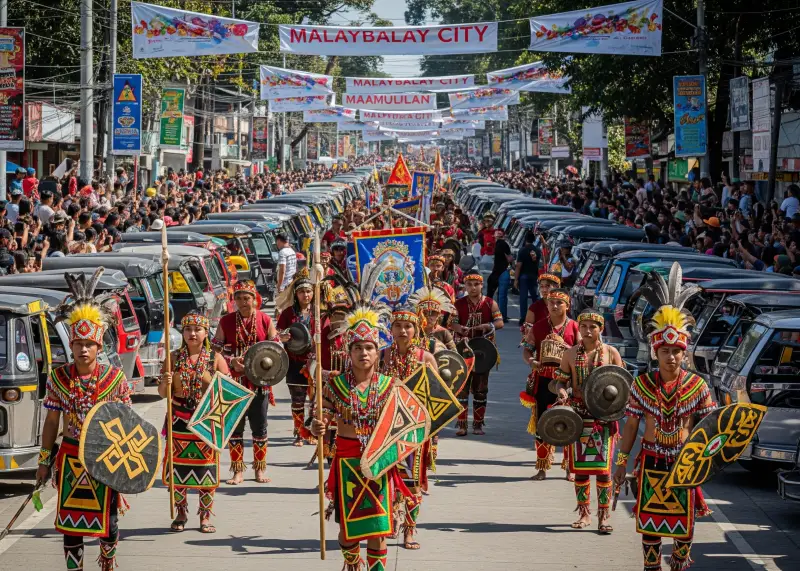
📌 Frequently Asked Questions
1. What is the best time to visit Malaybalay? The absolute best time is during the Kaamulan Festival season from mid-February to March 10. For pleasant weather and fewer crowds, the dry months from December to May are ideal.
2. What should I pack? The weather in Malaybalay is cooler than the lowlands, especially in the mornings and evenings. A light jacket, fleece, or sweater is essential. Also, pack comfortable walking shoes or hiking shoes if you plan to explore the mountains and springs.
3. Is Malaybalay a safe city for tourists? Yes, Malaybalay is widely regarded as a very safe and peaceful city. The community is friendly and welcoming to visitors. Standard travel precautions should still be observed.
4. How do I get around the city? The primary modes of transport within the city are tricycles and multicabs. Tricycles are best for shorter trips within the downtown area, while multicabs ply fixed routes along the main highway.
5. What is the best pasalubong to bring home? Monk’s Blend coffee from the Monastery of the Transfiguration is the most famous pasalubong. Their peanut brittle and other baked goods are also excellent. You can also find high-quality pineapple products and local handicrafts.
6. Is there good internet and mobile signal? Mobile data signal for major networks is strong and reliable in the city proper. It can become weak or intermittent in more remote areas like the mountain trails or springs. Most hotels and cafes offer free Wi-Fi.
7. What is the estimated budget for a trip to Malaybalay? Malaybalay is a very affordable destination. Excluding accommodation, a budget of ₱1,500-₱2,000 per person per day is comfortable for food, transportation, and entrance fees to attractions.
8. What language is spoken in Malaybalay? Cebuano (Visayan) is the main language spoken. However, Binukid, the language of the native Bukidnon tribe, is also used. English and Tagalog are widely understood, especially in business and tourism establishments.
❤️ A Final Word from the Road
There are journeys that excite the senses, and then there are journeys that soothe the soul. For me, Malaybalay has always been the latter. Driving up the winding roads of Bukidnon, watching the landscape shift from lowland plains to rolling hills and pine forests, feels like a homecoming to a part of the Philippines I wish more people knew.
This is a city that doesn’t shout for attention. Its charm is in the quiet dignity of the Monastery, the cool shade of the pines in Kaamulan Park, and the genuine warmth in the smiles of its people. It’s a place that reminds you of the deep cultural roots that anchor our nation. In a world that’s constantly rushing, Malaybalay is a beautiful, serene, and vital pause.



